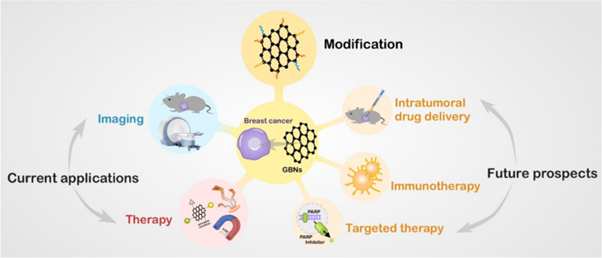Therapeutic Potential of Graphene Nanoparticles in Breast Cancer: Insights from the Past Ten Years
Abstract
 Abstract Views: 0
Abstract Views: 0
Breast cancer is the second leading cause of death in women all over the world and its prevention is still a challenge. There are various systemic and local therapies used in the treatment of breast cancer. These therapies, including chemotherapy, endocrine treatment, and tissue-targeted therapies, complement definitive local treatments including surgery or radiation, leading to a significant reduction in both cancer recurrence and disease-related mortality. However, traditional cancer therapies are limited in their specificity and systemic toxicity. In this scenario, nanomaterials may prove to be valuable in providing effective cancer treatments, while reducing unwanted side effects and providing precise diagnosis. Graphene nanoparticles and its derivative reduced graphene oxides (RGO), which belong to a category of carbon nanomaterial, have captured significant interest for their matchless utility as fundamental components in breast cancer treatment. This review focuses on different types of graphene-based nanomaterials which exhibit significant potential in drug delivery applications due to their unique properties, including high drug-loading capacity, pH-dependent release, and enhanced cellular uptake. A thorough search of a bibliographic database during the last decade (2013-2023), was conducted to find the research articles focused on nanotechnology using graphene for cancer treatments to gather the relevant information.
Downloads

Copyright (c) 2025 Ishrat Younus, Afshan Siddiq, Sarah Jameel Khan, Nimra Mujeeb, Rafia Sadaf

This work is licensed under a Creative Commons Attribution 4.0 International License.
UMT Journals are dedicated to fostering knowledge sharing, collaboration, and responsible use of published content. To facilitate these principles, UMT Journals publish articles under specific licenses that define how readers, researchers, and the broader community can use, share, and build upon the published work. Authors retain the copyright to their work while granting UMT Journals the right to publish the article under a specified license.









